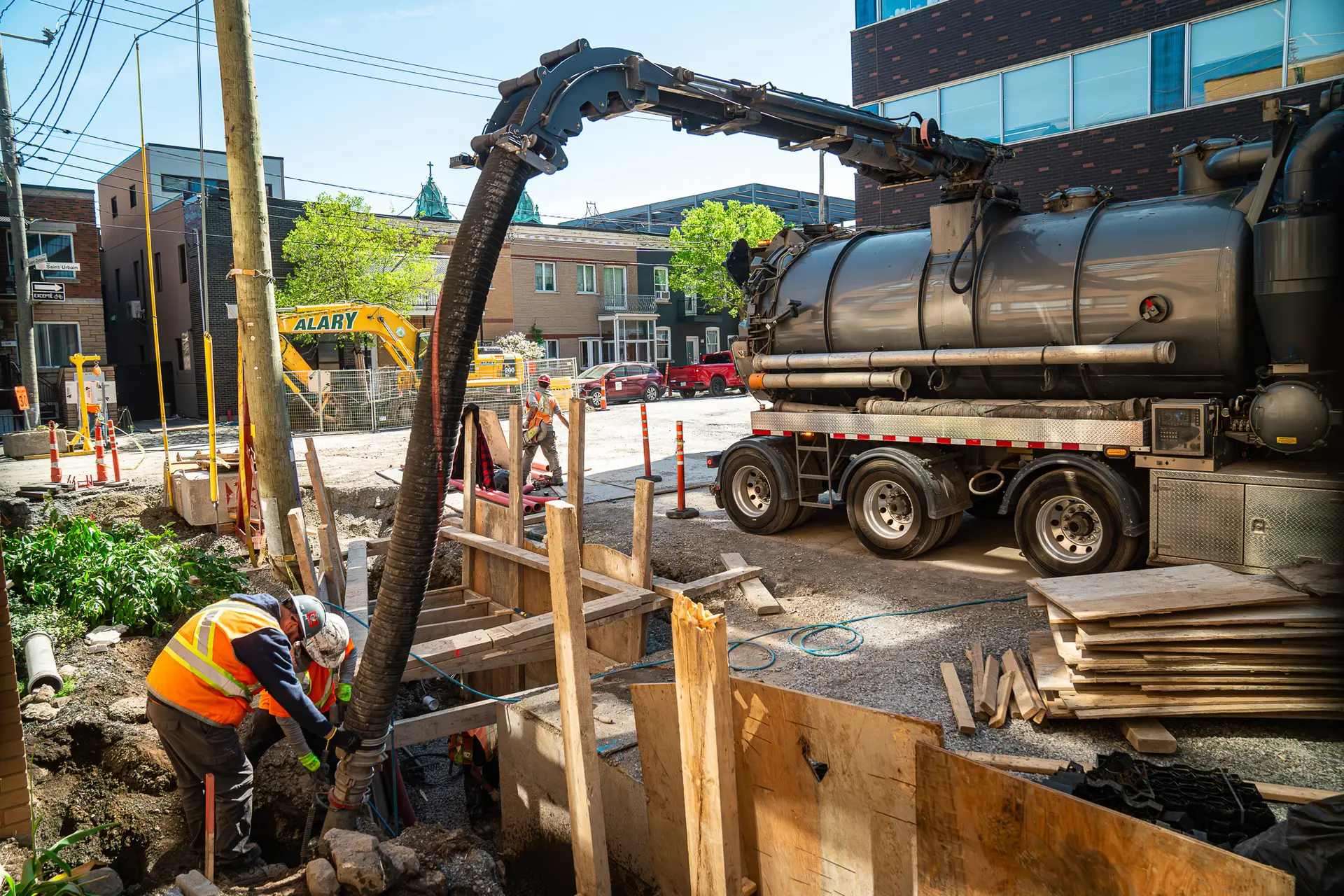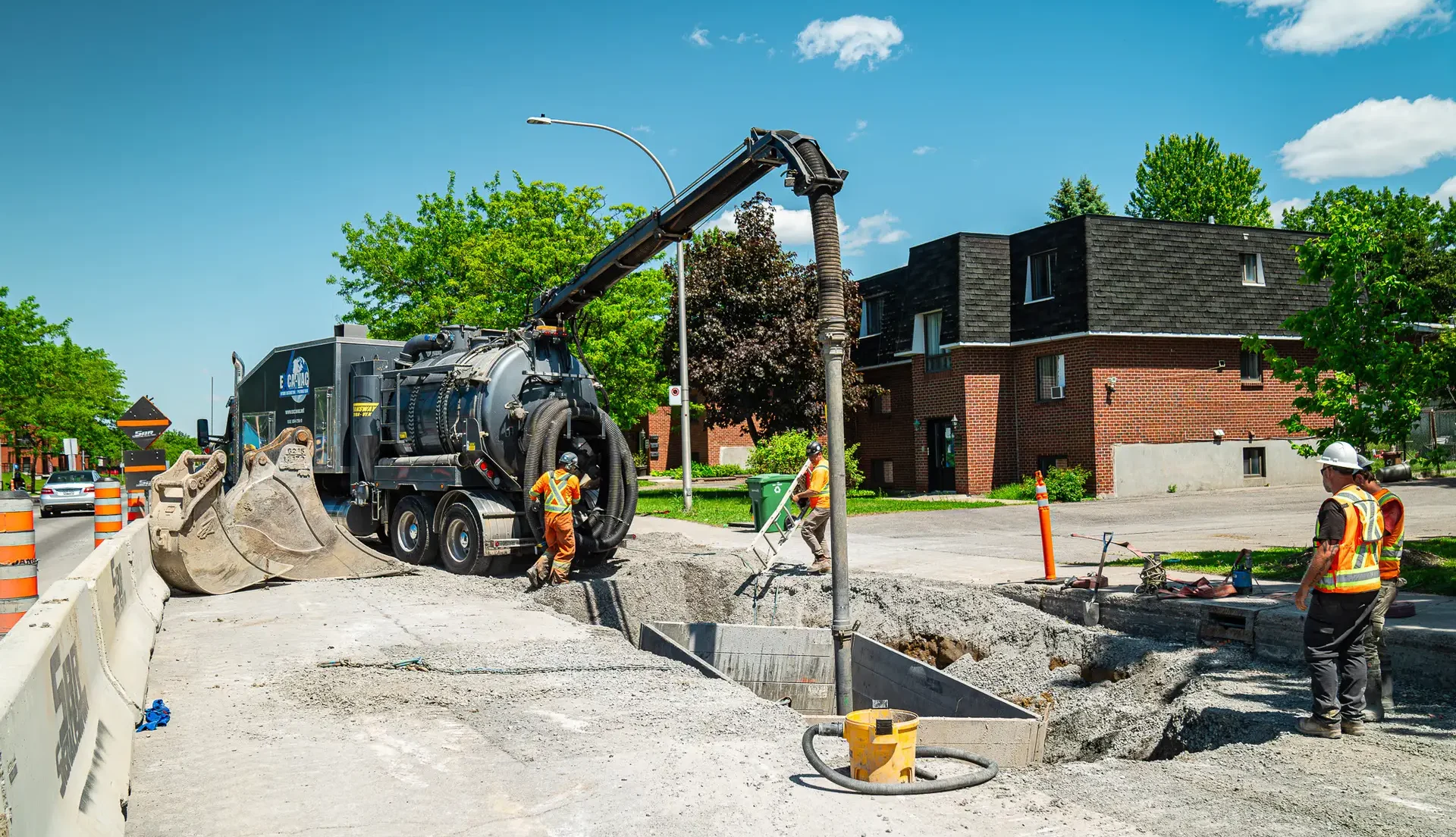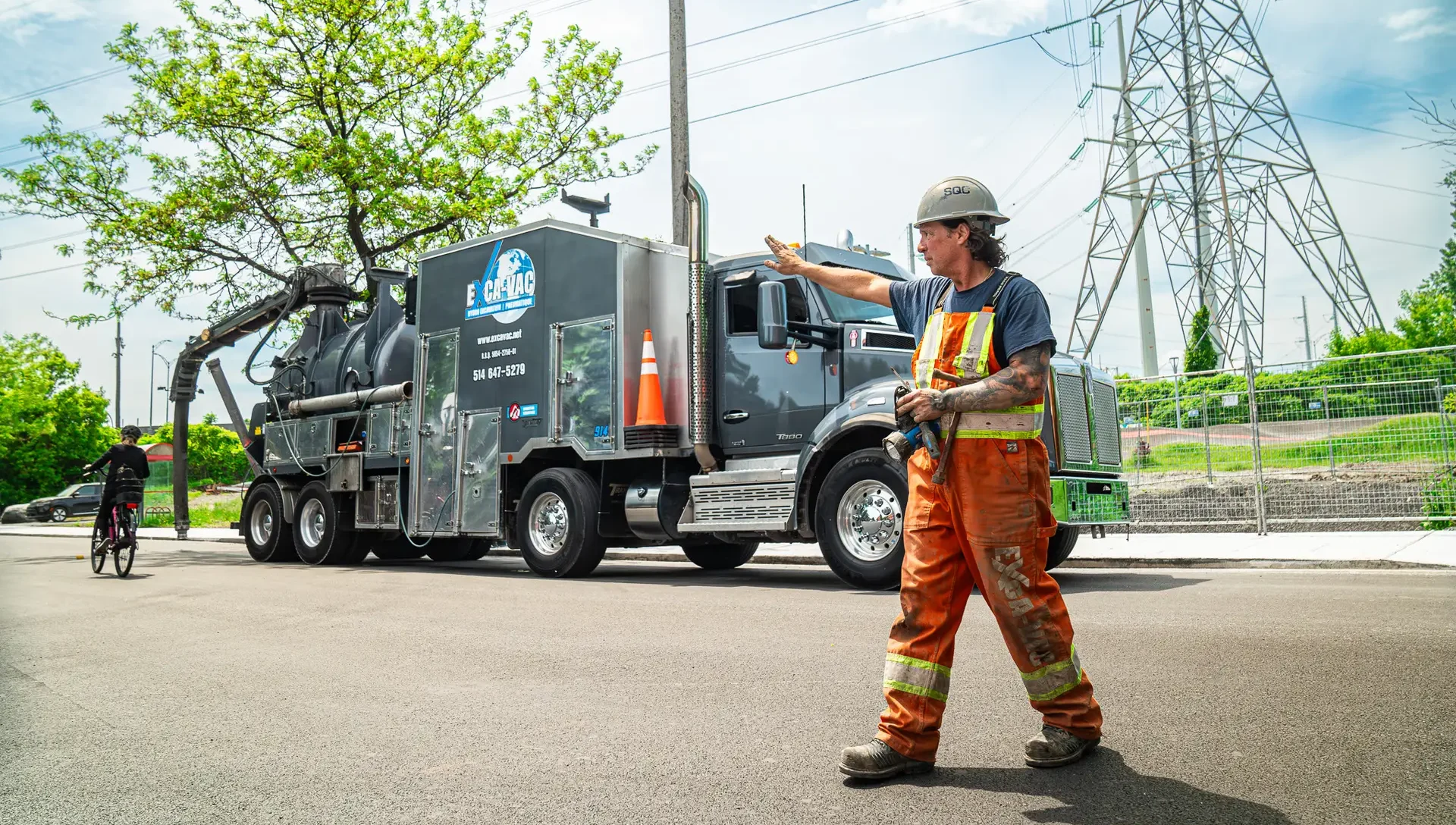OUR BLOG
TRUST THE EXPERTS
YOUR CONSTRUCTION PARTNER
At Excavac, we know that hydro-excavation is an essential method for guaranteeing safe and efficient work. That’s why we’ve created this blog: a space dedicated to informing you, advising you and helping you discover our expertise.
Discover informative articles, answers to frequently asked questions and simple, effective tips for protecting the integrity of your underground infrastructures, avoiding costly damage and ensuring precise, environmentally-friendly interventions.
Whether you’re a contractor, engineer or municipal manager, our content will help you better understand the benefits of soft excavation and choose the solutions best suited to your worksites. Stay tuned and explore industry innovations and best practices with us!

What types of projects require soft excavation?
What types of projects require soft excavation? Soft excavation, also known as hydro excavation, is a precise, safe, and infrastructure-friendly method. It’s increasingly favored by municipalities, contractors, and industrial operators

Hydro Excavation vs Mechanical Excavation: Which method is right for your project?
Hydro Excavation vs Mechanical Excavation: Which method is right for your project? When it comes to digging with precision and safety, two major methods are often compared: traditional mechanical excavation

Hydro Excavation: The safe and precise method for your construction sites
Understanding Hydro Excavation Hydro excavation is a modern technique that allows for precise digging using a high-pressure water jet combined with powerful industrial suction. Unlike traditional excavation methods that rely

WE ANSWER
YOUR QUESTIONS
What is hydro-excavation?
Hydro-excavation is a non-destructive excavation method that uses high-pressure water to break up the soil, while a vacuum system removes the debris. This technique enables precise and safe digging, minimizing the risk of damage to underground infrastructures such as gas mains, electrical cables and water pipes.
What are the advantages of hydro-excavation over traditional methods?
-
Greater precision: Allows precise digging, reducing the risk of damage to existing infrastructure.
-
Improved safety: Reduces risks for workers by avoiding the use of heavy mechanical equipment.
-
Reduced environmental impact: Less invasive, it preserves site integrity and reduces environmental disturbance.
-
Efficiency: A fast process that can reduce project lead times.
-
Lower restoration costs: less damage means lower repair and restoration costs.
When is hydro-excavation used?
Hydro-excavation is commonly used for :
-
Locating underground utilities: Precise identification of gas mains, electrical cables and water pipes prior to construction or repair work.
-
Trench creation: For the installation of new pipes, cables or other underground infrastructure.
-
Sewer and sump cleaning: Removal of accumulated sludge, sediment and debris.
-
Post and pile installation: Create precise holes for the installation of sign posts, fences or piles for various industrial applications.
-
Infrastructure maintenance: Access and cleaning of underground infrastructures for regular upkeep, ensuring their smooth operation and durability.
Is hydro-excavation safe for existing infrastructures?
Yes, hydro-excavation is designed to be a gentle, non-destructive excavation method. Using high-pressure water and controlled suction, it minimizes the risk of damage to existing underground infrastructure, unlike traditional mechanical methods.
Can hydro-excavation be used in winter or in difficult weather conditions?
Yes, hydro-excavation can be carried out even in difficult climatic conditions, including winter. The use of heated water breaks down frozen soil, making this method effective all year round.
What are the costs associated with hydro-excavation?
Hydro-excavation costs vary according to a number of factors, including project size and complexity, soil type, site accessibility and duration of work. Although the initial investment may be higher than for traditional methods, the advantages in terms of precision, safety and damage reduction can result in long-term savings.

![X-EXCAVAC-VISUEL-CANVA-01[29] EXCAVAC - HYDRO-EXCAVATION](https://excavac.net/wp-content/uploads/elementor/thumbs/X-EXCAVAC-VISUEL-CANVA-0129-e1737053127846-r03rrs780wkfn68x3j8wfryfwdcattvpzxz1f1ccks.png)